- Author Miguel Ramacey [email protected].
- Public 2023-12-17 06:11.
- Last modified 2025-01-24 21:21.
Almost two centuries ago, Emperor Nicholas I was given the project of the Kazan Cathedral in Stavropol for consideration. The sovereign partially approved it, ordering the architect Alexander Ton to remake the facade. After appropriate corrections, the project was approved and the construction of the tallest building in Stavropol began. The Cathedral of Our Lady of Kazan was built to last for centuries, and therefore all the inhabitants of the city, from eminent merchants to ordinary workers, took part in such a charitable work. However, first things first.
Meeting of the City Duma
Any project begins with an idea, which is clothed in specific intentions and calculations, after which it is embodied in material forms. And the history of the cathedral began with the fact that in 1838 the old wooden church in honor of the icon of the Kazan Mother of God was demolished, and therefore the city needed a new church. On this occasion, the City Duma metStavropol November 16, 1841. Her decision about her intention to build a church was brought to the attention of the district chief - Colonel A. Maslovsky. Numerous approvals have begun.
The original idea and calculations belong to the architect Durnovo. When the project was properly formalized, it was sent for approval to the head of the Caucasus region, Adjutant General P. Grabbe, who liked everything. Further, it was necessary to obtain the approval of the spiritual hierarchs, that is, the Archbishop of Novocherkassk and Georgievsky Athanasius. And there were no problems here. Then P. Grabbe, wishing to speed up the course of the case, turned with this request to the chief prosecutor of the Holy Synod, Count N. Protasov. He took the trouble and the project of the Kazan Cathedral of Stavropol ended up on the imperial table and, as already mentioned, after Alexander Ton's corrections, it was approved. This was the end of the bureaucratic part.
Part two - financial
The collection of donations has begun. The merchant class was the first to respond, as usual. For example, Nikita Plotnikov contributed 1000 rubles (a very large sum for that money) in memory of his son who died on Taman. Stavropol merchants I. Mesnyankin, I. Zimin, N. Alafuzov, hereditary honorary citizen A. Nesterov and many other eminent and unremarkable citizens did not lag behind him. Among the donors were many churches of the Novocherkassk and Georgievsk diocese, as well as officers of the Tenginsky regiment, which in those years was stationed in the city. The whole world raised 20,000 rubles. However, this amount was insufficient to carry out continuousconstruction of the Kazan Cathedral in Stavropol.
Then it was decided to collect the missing money for 3 years systematically, that is, for each resident, depending on his class affiliation, a certain amount was established, which had to be paid into the public fund. And he was supervised by trustees - the commandant of Stavropol and the merchant Korney Chernov.
Part three - construction
Merchants of Stavropol were both donors and contractors, supplying workers of the necessary speci alties with all the tools, as well as materials for construction. When the walls and roof were erected, it was the turn of the interior decoration of the temple. It should be noted that the enthusiasm of the inhabitants did not decrease with time, as evidenced by archival documents. In particular, the merchant Sergei Lunev expressed a desire to contribute 12,000 rubles in banknotes for the construction of the Royal Gates and the acquisition of four icons: Jesus Christ, the Mother of God, St. Nicholas the Pleasant and St. Prince Alexander Nevsky.

The construction of the Kazan Cathedral in Stavropol was completed in 1847 by joint efforts. That is, it took 4 years to build it. Even by today's standards, it was a very short time. Apparently, with God's help, construction is going much faster…
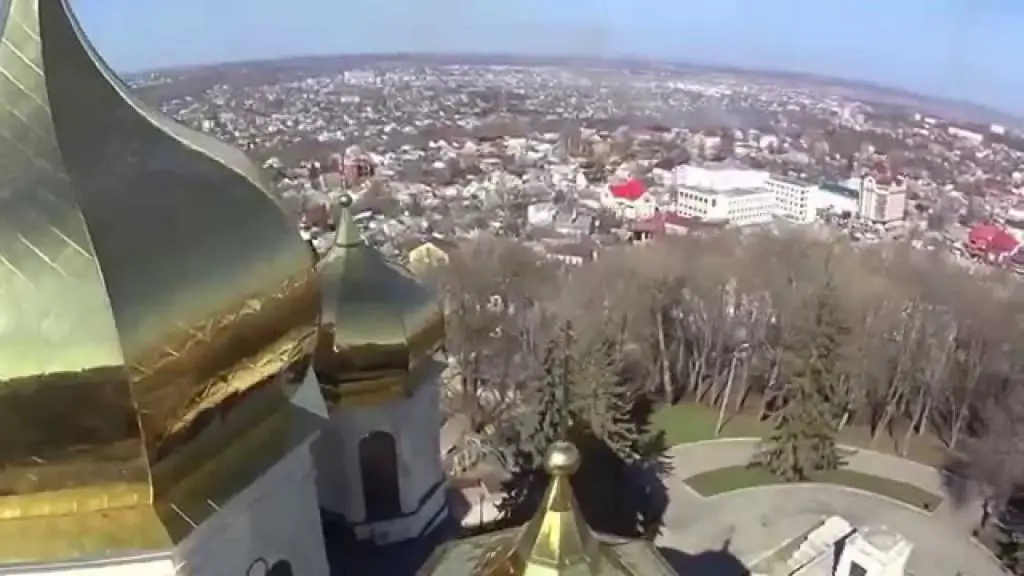
August 20, 1847 the temple was given the status of a cathedral. What does this mean? And the fact that the Kazan Cathedral of Stavropol became the main temple of the diocese, which is managed by a bishop or other person of the highest spiritualhierarchies of the 3rd level (bishop, archbishop, metropolitan, etc.).
Further transformations
Of course, such a majestic building needed an appropriate bell tower. In 1865, the Stavropol architect P. Voskresensky undertook her project. After some time, construction began to the west of the temple. The bell tower turned out to be three-tiered and reached a height of 98 m, being the tallest building in the city. The 2nd and 3rd tiers were intended to accommodate 3 bells.
The bells of the cathedral were heard for many miles around, which is not surprising: one of them weighed 104 pounds, and was purchased at the expense of the same merchant Sergei Lunev; the second (525 pounds) was donated by the philanthropist Lavr Pavlov; and the third (Tsar Bell) weighed 600 pounds (9828 kg) and was made with the money of the entire merchant class of Stavropol.
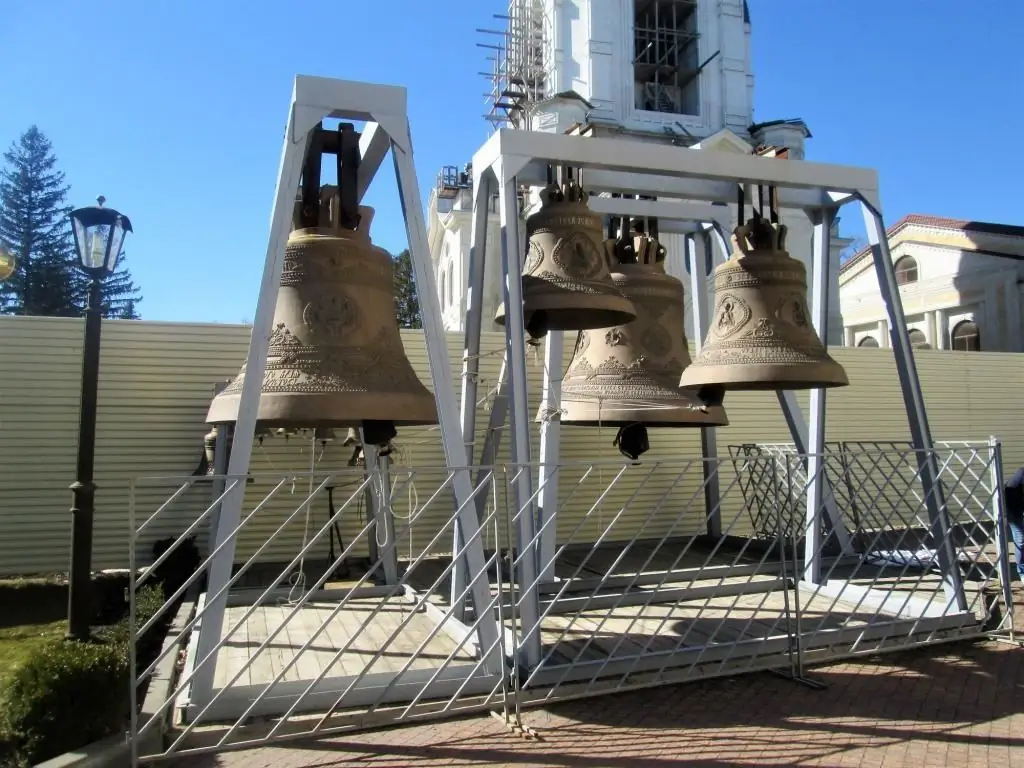
For comparison: the bell in the cathedral of Reims weighs about 10 tons, but is not currently used due to the weakness of the ceilings.
Entering the 20th century
The first 10 years of the 20th century were the last quiet time for Stavropol and the Kazan Cathedral. Photos of those years are witnesses of the peaceful life of the city and its inhabitants, unaware of the onset of hard times.
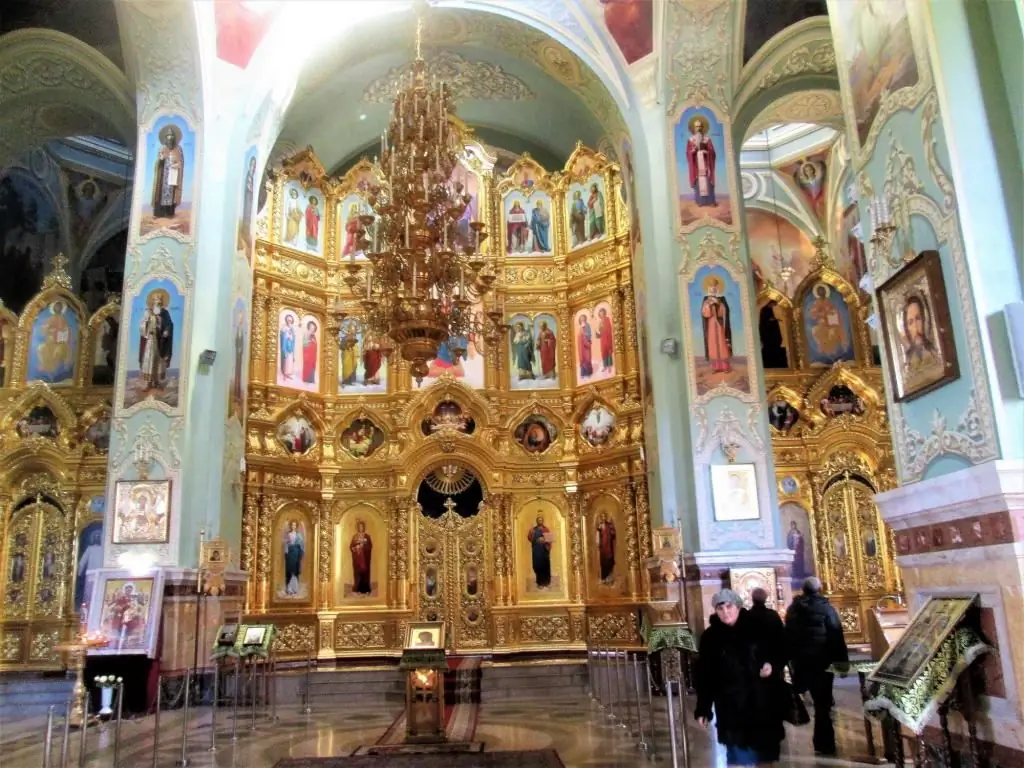
Then the time of "transformations" began, as a result of which the valuables from the temple were seized in 1922 to help the starving people of the Volga region. An inventory of the property of the Cathedral has been preserved, confirming the surrender of 30 pounds of silver (about 500 kg) in favor of the state.
Thenit was the turn of the walls of the temple: in the 30s they were dismantled, because the country needed building material. The graves that were within the boundaries of the temple were devastated. The building of the bell tower, considered a cultural monument, was first used as a radio antenna, and in 1943 there was a reason to blow it up, as it could become a landmark for enemy aircraft.
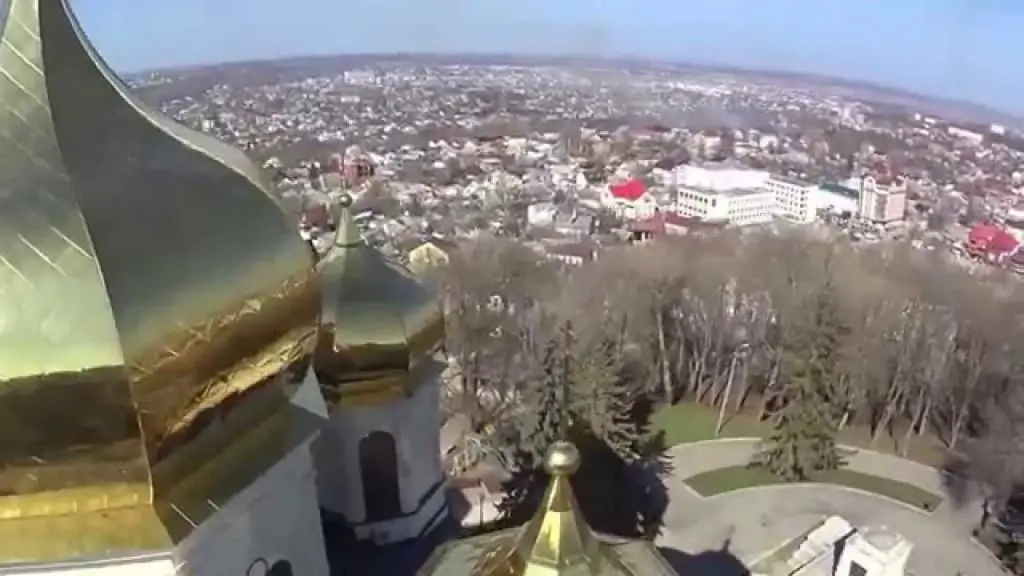
The hill on which the symbol of Stavropol was located was named Komsomolskaya.
New times
90s turned out to be a turning point for the temple: the restoration of the complex began. As in the old days, the hope was only for voluntary contributions, for which an account was opened. Archaeologists conducted reconnaissance at the site of the destroyed temple and established the exact parameters of its location.
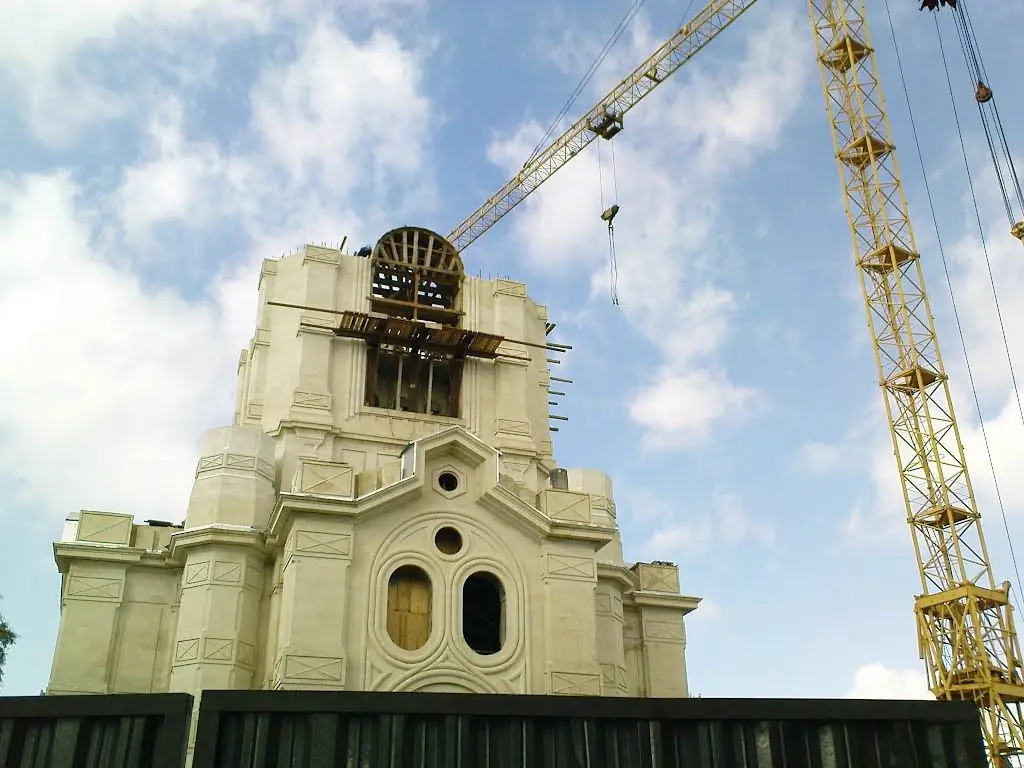
In 2004, a chapel was erected in the name of St. Nicholas the Wonderworker at the expense of the chief technologist of the Krasny Metallist plant Alexander Nikolayevich Kapustyansky, whose son died in the Caucasian War. It is said that time moves in a spiral, and each event of the past returns to the present at a new level…
And then archival research began to recreate the original appearance of the cathedral. This was done by the architect of the diocese V. Aksenov.

In 2008, the temple was restored and consecrated, and already on April 4, 2010 (on the celebration of Easter), the first service was held in the Kazan Cathedral of Stavropol. The schedule of the temple is easy to remember: itopen daily from 7:30 a.m. to 8:30 p.m.
And there is always a priest in the cathedral to help you with your questions.






